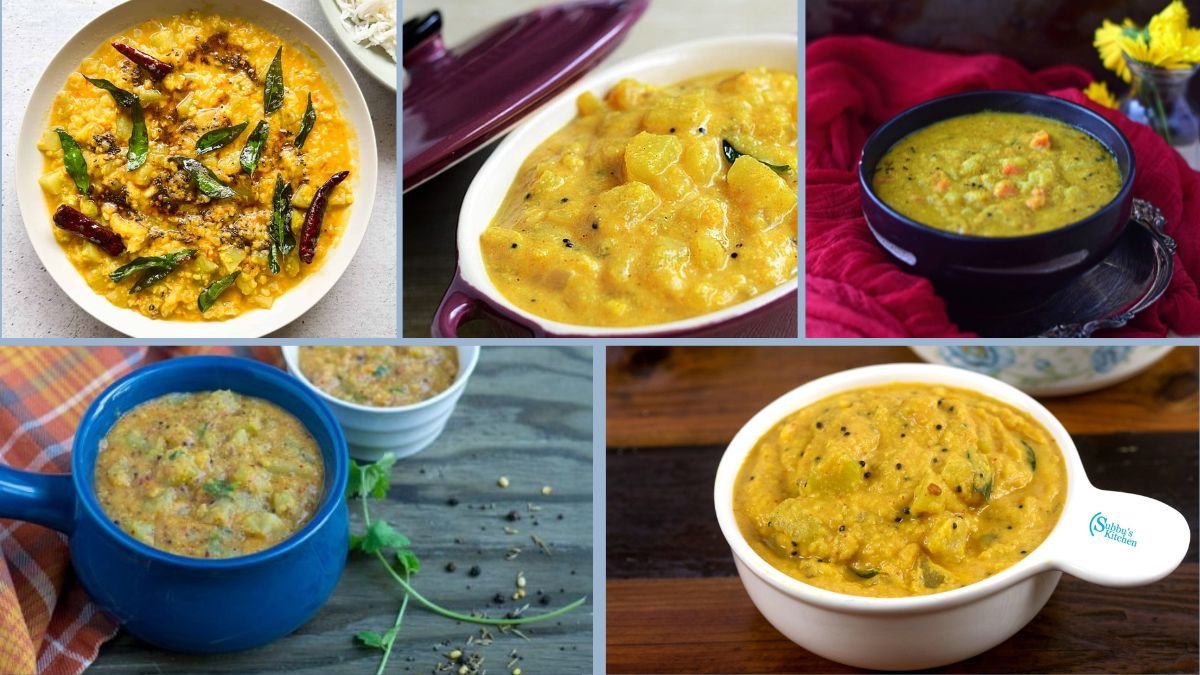South Indian cuisine is a treasure trove of wholesome, balanced, and flavorful dishes. One such gem is Chow Chow Kootu, a mildly spiced, protein-rich curry prepared with chow chow (also known as chayote squash), lentils, and a freshly ground coconut-spice paste. It is a comfort food that represents the perfect blend of taste and nutrition, usually enjoyed with hot steamed rice, sambar, or rasam.
The word kootu in Tamil literally means “to add together.” True to its name, kootu combines vegetables and lentils into a semi-thick dish, enriched with a coconut-based masala. Among the many variations—cabbage kootu, snake gourd kootu, or mixed veg kootu—the chow chow kootu holds a special place because of its simplicity, availability, and health benefits.
In this article, we will explore a 7-step guide to cook veg chow chow kootu South Indian style, along with its ingredients, nutritional values, cultural significance, serving ideas, and expert cooking tips.
Why Chow Chow Kootu?
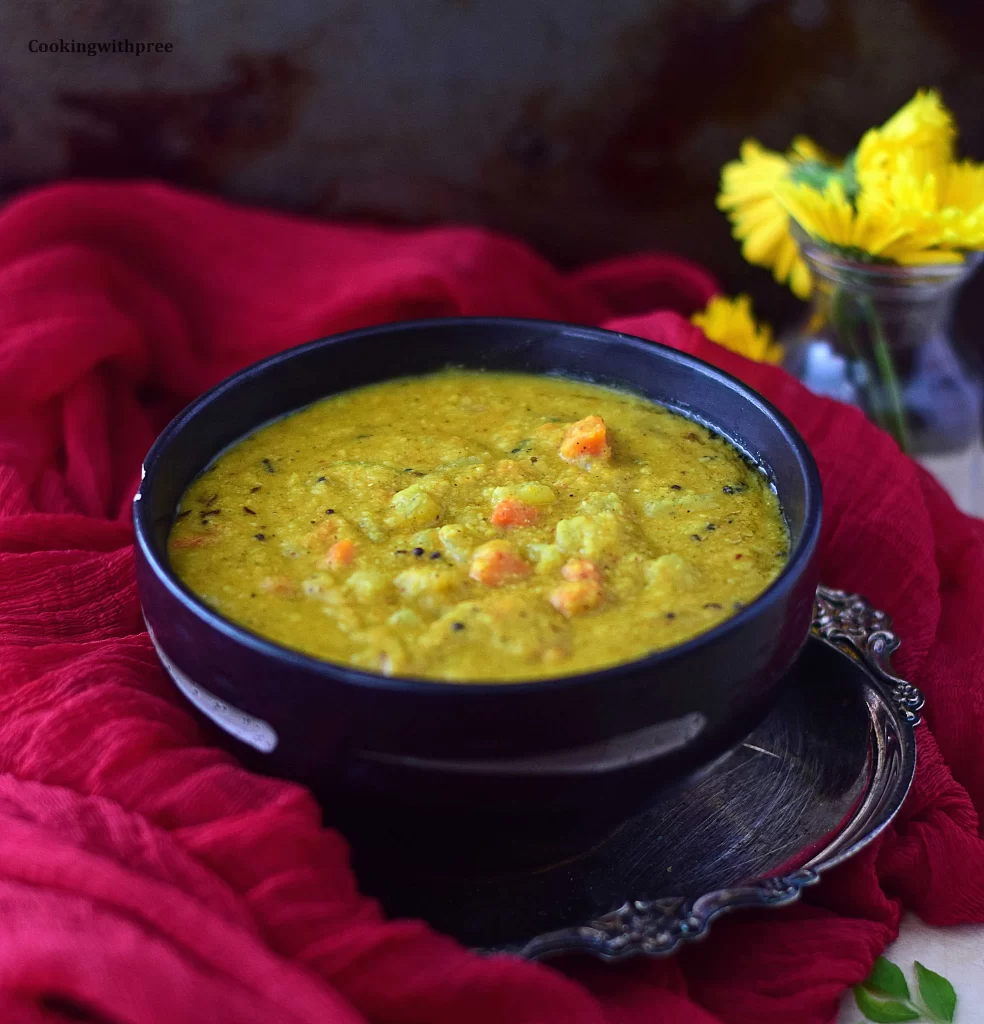
Before jumping into the recipe, here’s why this dish is a star in South Indian homes:
- Nutrient-Dense – Chow chow is rich in fiber, Vitamin C, and folate. Paired with lentils, it offers a wholesome mix of protein and micronutrients.
- Balanced Dish – With lentils (protein), vegetables (fiber), and coconut (healthy fats), kootu is naturally balanced.
- Light Yet Filling – Perfect for those who want a hearty dish that’s not too spicy or heavy.
- Sattvic & Vegetarian – Made without onion or garlic in traditional households, making it suitable for fasting and rituals.
- Quick Cooking – Ready in under 30–40 minutes, ideal for everyday meals.
Key Ingredients
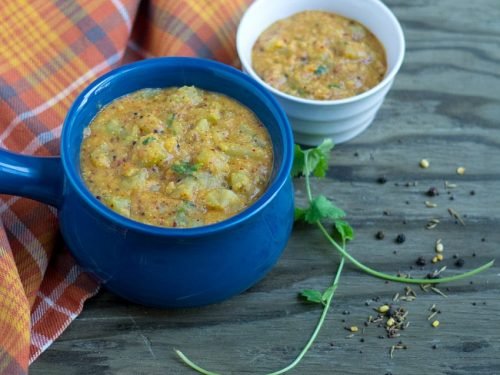
For a family of 4, gather the following ingredients:
- Chow chow (chayote squash) – 2 medium, peeled and diced
- Moong dal (yellow split lentils) – ½ cup
- Turmeric powder – ¼ tsp
- Salt – as required
- Water – 2–3 cups
For the Coconut Paste
- Fresh grated coconut – ½ cup
- Green chilies – 2
- Cumin seeds – 1 tsp
For Tempering
- Coconut oil – 2 tsp (or sesame oil)
- Mustard seeds – ½ tsp
- Urad dal – ½ tsp
- Curry leaves – 1 sprig
- Dry red chili – 1
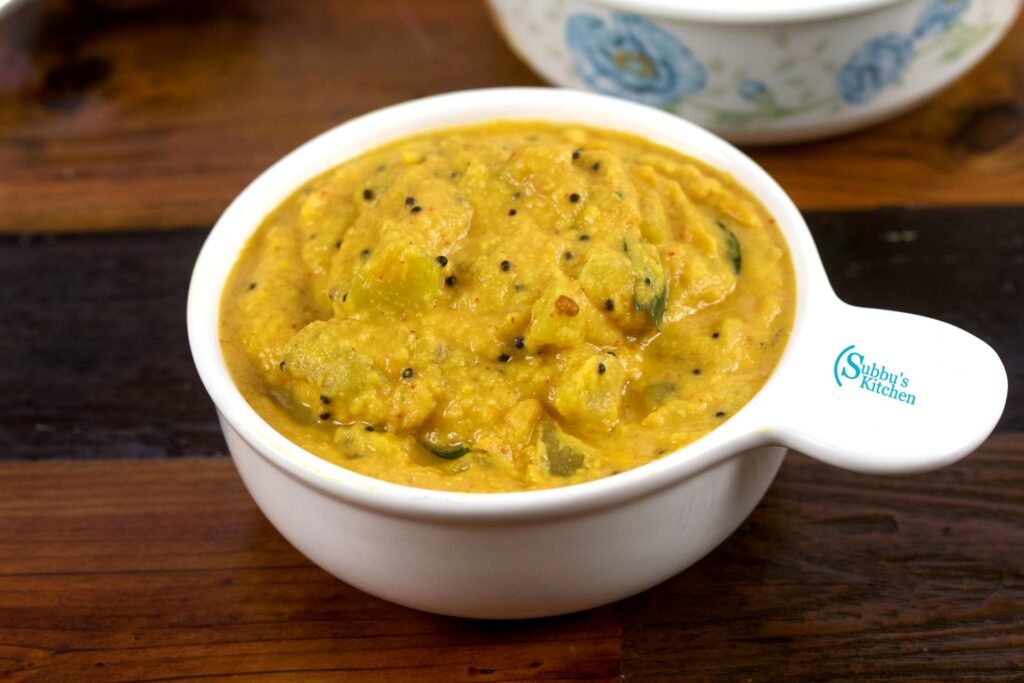
The 7-Step Recipe
Step 1: Prepare the Chow Chow
- Wash, peel, and dice the chow chow into small cubes.
- Remove the inner seed if it’s hard (tender seeds can be used).
- Keep aside in a bowl of water to prevent browning.
Step 2: Cook the Moong Dal
- Wash the moong dal thoroughly.
- In a pressure cooker or pot, add dal, 2 cups water, turmeric, and a pinch of salt.
- Cook until soft (2–3 whistles in a pressure cooker or 20 minutes in an open pot).
- Mash lightly with the back of a spoon; it should be soft but not mushy.
Step 3: Cook the Chow Chow
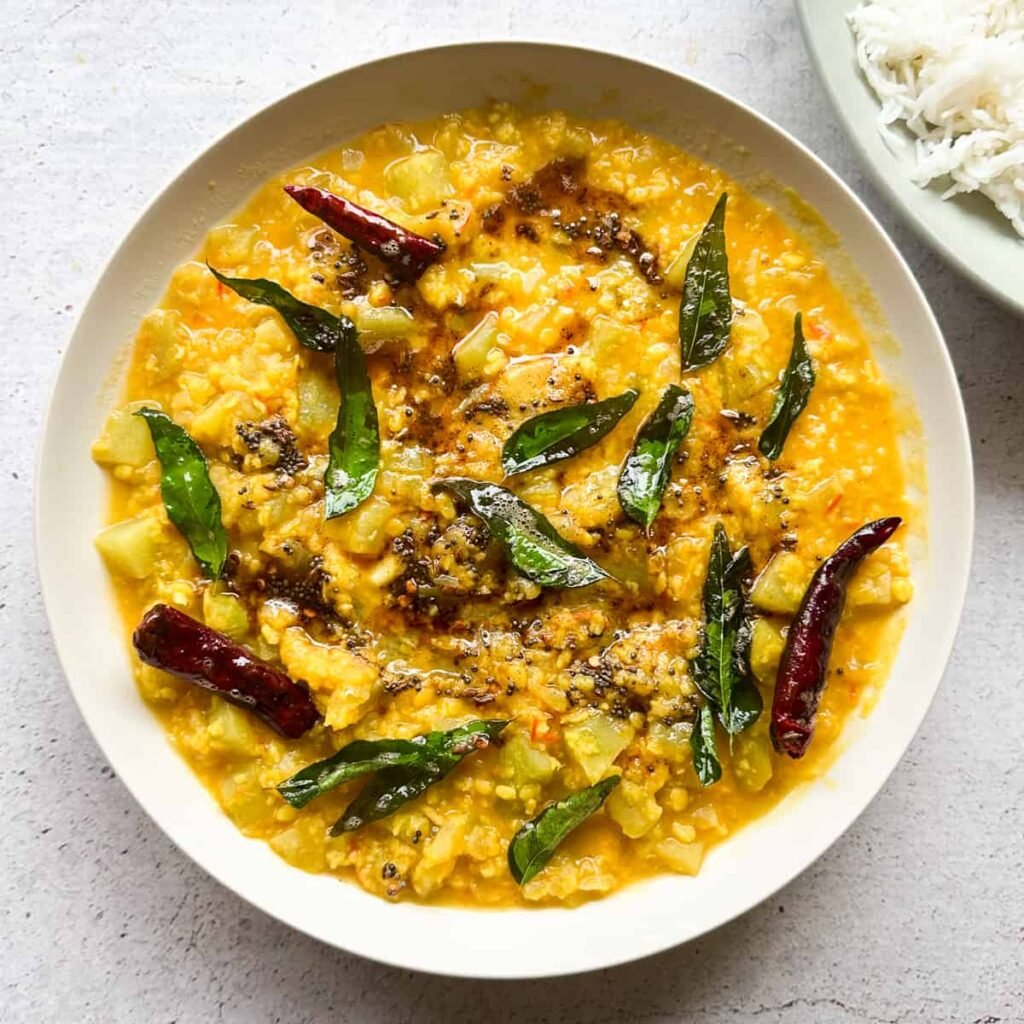
- In a separate vessel, add diced chow chow, a little salt, and 1 cup water.
- Cook covered until the vegetable turns soft but holds its shape (about 10–12 minutes).
- Do not overcook, as chow chow has a delicate texture.
Step 4: Prepare the Coconut Paste
- Grind fresh grated coconut, green chilies, and cumin seeds into a smooth paste using a little water.
- This paste is the heart of the dish—it brings the authentic South Indian kootu flavor.
Step 5: Combine Dal, Chow Chow, and Paste
- Mix the cooked dal with the chow chow in one vessel.
- Add the coconut paste and stir well.
- Adjust consistency with water (kootu should be semi-thick, not watery).
- Simmer for 5–7 minutes on low flame so the flavors meld together.
Step 6: Temper the Kootu
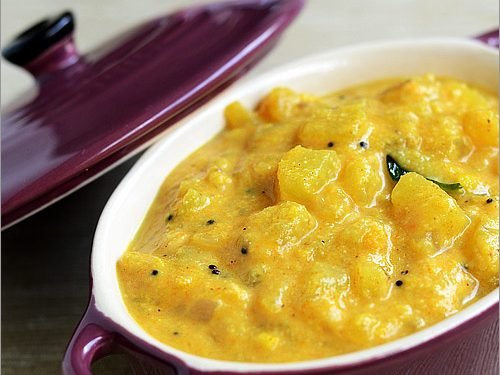
- In a small pan, heat coconut oil.
- Add mustard seeds, let them splutter.
- Add urad dal, curry leaves, and dry red chili.
- Pour this tempering over the simmering kootu.
- Mix gently for even distribution.
Step 7: Serve Hot
- Switch off the flame and let the kootu rest for a few minutes.
- Serve hot with steamed rice, chapati, or as a side dish with sambar or rasam.
Serving Suggestions
Chow chow kootu fits beautifully into a South Indian meal plate (elai sappadu):
- With steamed rice and a dollop of ghee for a wholesome lunch.
- As a side dish with rasam or sambar to add balance.
- Alongside phulkas or chapatis for a lighter dinner option.
- With millet rice or quinoa for a modern, healthy twist.
Nutritional Benefits
Here’s why chow chow kootu is both delicious and nutritious:
- Chow chow (Chayote squash) – Rich in antioxidants, Vitamin C, and dietary fiber; promotes hydration and digestion.
- Moong dal – A source of plant-based protein, iron, and potassium.
- Coconut – Provides healthy fats and adds satiety.
- Cumin seeds – Aid digestion and reduce bloating.
- Curry leaves – Enhance flavor while boosting iron and calcium.
Approximate nutrition per serving (1 cup):
- Calories – 150–180 kcal
- Protein – 6–8 g
- Fiber – 5–6 g
- Healthy fats – 6–8 g
This makes it an ideal dish for people managing weight, diabetes, or digestion-related concerns.
Cultural Significance
Chow chow kootu is more than just food—it’s part of South India’s culinary tradition:
- Everyday Staple – Kootu is often prepared daily in Tamil, Telugu, and Kannada households as part of the standard meal plate.
- Festive Cuisine – During religious festivals or fasting days, kootu is a preferred dish since it is sattvic (made without onion and garlic).
- Ayurvedic Roots – Its mild spice, coconut, and dal base align with Ayurvedic principles of balance and digestion.
- Family-Friendly – Its subtle flavor makes it suitable for children and elders.
Expert Tips for the Perfect Kootu
- Choose Tender Chow Chow – Avoid old or fibrous ones for the best texture.
- Consistency Matters – Neither too thick like dal nor too watery like curry; kootu should coat rice easily.
- Fresh Coconut – Always use freshly grated coconut for authentic flavor.
- Oil Choice – Coconut oil enhances traditional taste; sesame oil works well too.
- Spice Control – Adjust green chili quantity based on preference; kootu should be mildly spiced.
- Advance Prep – Cook dal beforehand and refrigerate to cut cooking time.
- Millet Pairing – For a healthier twist, serve with foxtail millet, little millet, or brown rice.
Comparison: Chow Chow Kootu vs. Other Curries
| Feature | Chow Chow Kootu | Regular Vegetable Curry |
|---|---|---|
| Base | Lentil + coconut paste | Onion-tomato or spice gravy |
| Flavor | Mild, soothing, coconut-rich | Bold, tangy, or spicy |
| Digestibility | Light, easy to digest | Heavier, may cause acidity |
| Occasion | Everyday + festivals | Mostly everyday meals |
| Nutrient Balance | Protein + fiber + healthy fats | Mainly carbs and fats |
Conclusion
The beauty of South Indian kootu lies in its simplicity, balance, and nutrition. This 7-step chow chow kootu recipe—from preparing chow chow, cooking dal, grinding coconut paste, combining, tempering, and finally serving—shows how easily a comforting dish can be made at home.
Unlike heavily spiced curries, kootu highlights the natural sweetness of vegetables, the earthiness of lentils, and the richness of coconut, creating a harmony of flavors. It is an everyday dish with festival-worthy elegance, making it an indispensable part of South Indian cuisine.
So, the next time you want a healthy, light, and soul-satisfying dish, follow this 7-step guide to cook chow chow kootu South Indian style. It’s not just food—it’s a bowl of tradition, wellness, and comfort.
